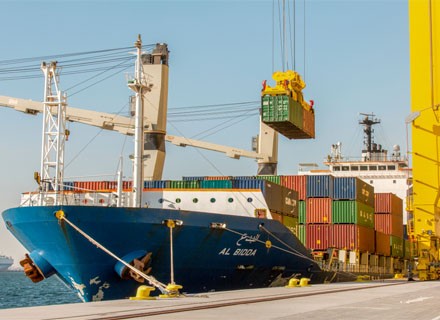According to Mwani Qatar (the Gulf country’s port authority), the ports of Hamad, Ruwais, and Doha saw a notable increase in cargo handling volumes in December 2023, contributing to their outstanding performance.
December 2023 saw a considerable increase in cargo handling—a growth of 45% over November 2023.
According to Mwani Qatar, growth rates for RORO (Roll-on/roll-off) shipping units and building materials were 47% and 110% respectively.
By month, the amount of general and bulk cargo handled through the three ports increased by 45%, from 137,518 metric tons in December 2023 to 94,990 metric tons in November 2023.
While the ports handled 107,634 TEUs (twenty-foot equivalent units), 8,339 units, 24,571 heads, and 49,184 tonnes in containers, RORO, cattle, and building materials during the same period, 223 vessels arrived at the ports in December 2023.
In November 2023, there were 94,990 tons of general and bulk cargo handled at the three ports, up 22% from October 2023. The ports of Qatar welcomed 226 boats in the same period; they handled 125,202 TEUs (twenty-foot equivalent units), 5,656 units, 32,150 heads, and 23,422 tonnes of building materials, cattle, and RORO.
Data from the Mwani Qatar website indicates that in 2023, 2,546 ships made port calls at Qatar’s three ports. In the previous year, the three ports handled 1,634,728 metric tons of general cargo, 72,697 units of RORO (vehicles), 1,221,073 TEUs of containers, 419,425 heads of livestock, and 479,244 metric tons of building materials.
Hamad Port handled 1,318,414 TEU containers, 1,303,049 break bulk freight tonnes, 400,478 bulk freight tonnes, 9,301 animal heads, and 80,294 RORO units in 2023. As many as 1,655 vessels docked at the port in 2023.
Hamad Port continues to steadily advance in its quest to become one of the most important ports in the Gulf area. It aims to make Qatar’s logistics services sector more effective and to position the country as a major hub for international trade, thereby strengthening its ambitions for economic diversification in line with the ‘Qatar National Vision 2030’.
The design of the container terminals takes into account the growing amount of trade, making business transactions easier and contributing to the realisation of economic diversification—one of the main objectives of the ‘Qatar National Vision 2030’.
In addition, QTerminals reports that in December 2023, Hamad Port handled 137 boats in terms of containers, bulk, break bulk, and RORO. These figures were, respectively, 106,603 TEUs (twenty-foot equivalent units), 31,000 F/T (freight tons), 101,022 F/T, and 8,310 units.
Based on its performance through November 2023, Hamad Port was able to welcome up to 139 boats, handle 125,258 TEUs (tonnes of containers), 88,865 freight tonnes of break bulk cargo, 5,645 RORO units, and 8,000 animal heads.
Qatar Ports Management (Mwani, Qatar) and Qatar Navigation (Milaha) together developed QTerminals, a terminal operating firm that facilitates Qatar’s imports and exports, its maritime trade flows, and promotes economic growth on a local and regional level.


